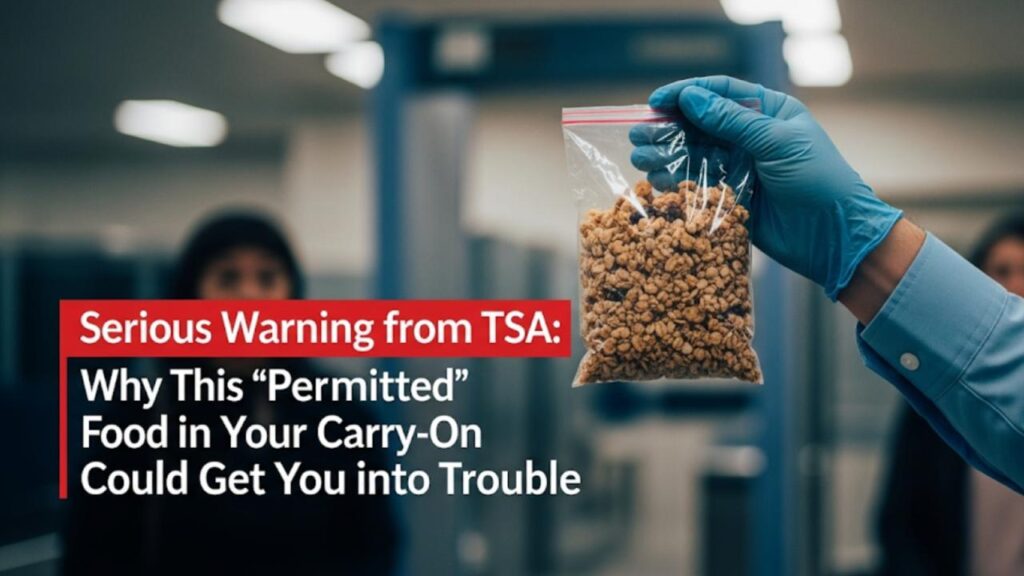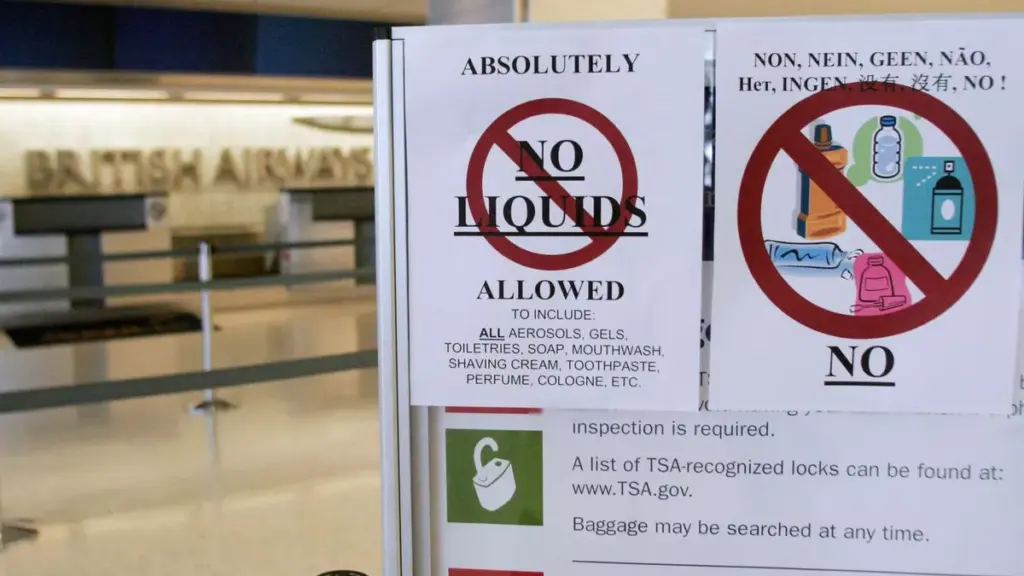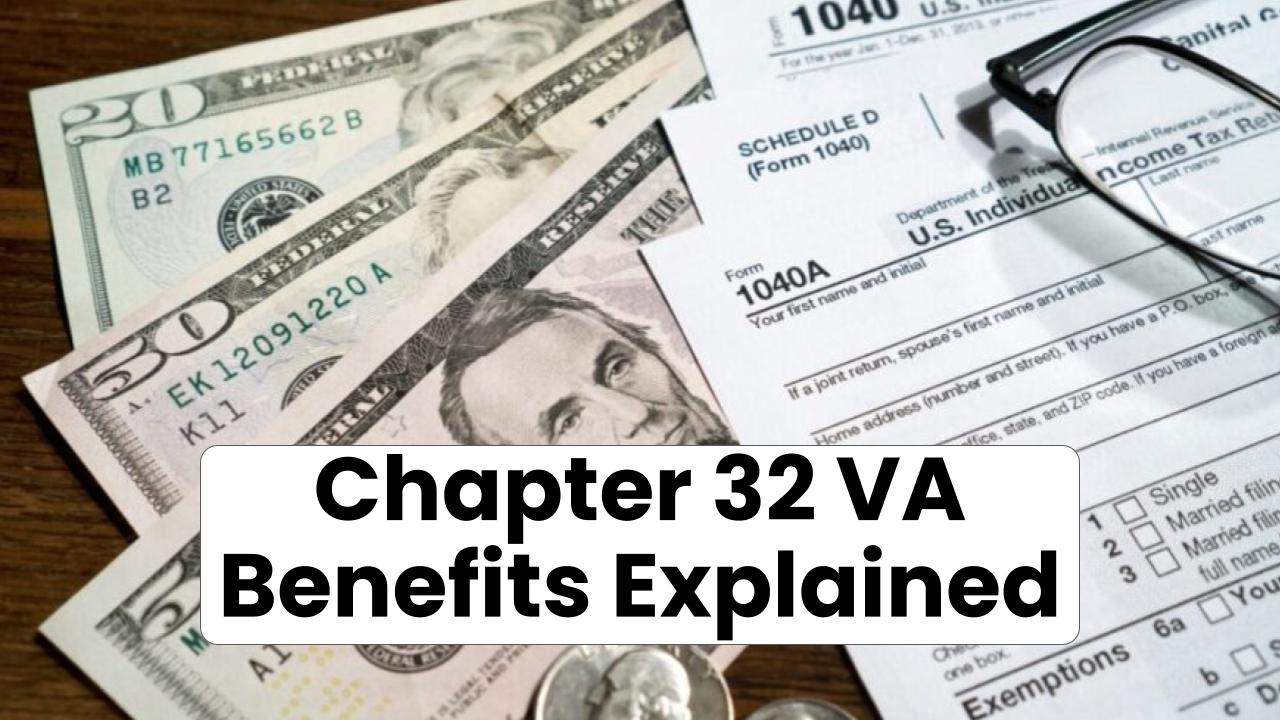Traveling through airports can sometimes feel like navigating a maze. Between the long lines, the security checks, and the rules about what you can and can’t bring, it’s easy to get frustrated. And when it comes to bringing food with you on your flight, many travelers mistakenly believe that anything labeled as “permitted” is good to go. However, this might not always be the case, especially when it comes to airport security and the TSA’s rules for carry-on items.

Serious Warning from TSA
| Key Data & Tips | Details |
|---|---|
| Permitted food | Solid foods like sandwiches, granola bars, and chips |
| Restricted food | Items like hummus, peanut butter, and creamy dips |
| TSA’s 3-1-1 Liquids Rule | Each liquid/gel must be under 3.4 oz in a quart-sized bag |
| Examples of food with liquid or gel | Jams, salad dressings, frosting, dips |
| International travel tips | Always declare food to avoid customs fines |
| Official TSA guidelines | TSA’s Food List |
While it may seem like a lot of rules, packing food for air travel doesn’t have to be stressful. By understanding TSA’s 3-1-1 rule and the specific food restrictions, you can avoid trouble at the checkpoint and ensure your snacks make it with you on your journey. Just remember: when in doubt, pack solid foods, check your labels, and always be mindful of the 3.4 oz rule for liquids and gels.
TSA’s 3-1-1 Rule: Why It Matters for Your Snacks
First things first, if you’ve flown before, you’ve probably heard of the TSA’s 3-1-1 rule. This rule applies to all liquids, gels, creams, and pastes in your carry-on luggage, and it’s important to keep this in mind when packing food.
The 3-1-1 rule states that:
- 3.4 oz (100 ml) or less per container
- 1 quart-sized, clear, resealable plastic bag
- 1 bag per passenger
This applies to things like drinks, sauces, and yes, even food items that have a liquid or gel-like consistency. So, while a sandwich might not raise any red flags, something like peanut butter, jelly, or even salad dressing could land you in a sticky situation (pun intended!).
For example, imagine you’re carrying a jar of peanut butter (which is a classic traveler snack). If the jar is more than 3.4 oz, you’ll have to check it in your luggage instead of carrying it on. If it’s under that limit, you’re good to go, but it has to fit into your quart-sized bag.
What Foods Fall Under the 3-1-1 Rule?
Some foods might seem solid at first glance but fall under the rule because of their texture or ingredients. These are the foods you need to pay extra attention to:
- Nut Butters: Peanut butter, almond butter, and similar spreads are often considered liquids or gels and must be under 3.4 oz in your carry-on.
- Jams and Jellies: Despite being a staple in many snacks, jams and jellies have a gel-like consistency and are subject to the 3-1-1 rule.
- Creamy Cheeses: Things like cream cheese, cheese spreads, and processed cheese often have a soft, spreadable texture that qualifies them as gels.
- Frosting and Cookie Dough: Both of these are considered pastes or gels and must be packed in small containers to comply with the TSA rules.
- Dips: Hummus, guacamole, and other creamy dips are also subject to the rule, so be sure to pack them in small containers.
In short, foods that have a spreadable or gel-like texture are more likely to be affected by this rule. Always check the label to see if it’s a gel, paste, or liquid before deciding to pack it in your carry-on.

Foods You Can Definitely Take
Not all foods are restricted by the 3-1-1 rule. Solid foods are generally allowed in your carry-on, which is great news for snack lovers. These include:
- Sandwiches: Whether you prefer a classic PB&J or a more sophisticated turkey and cheese, sandwiches are typically allowed.
- Granola Bars: A quick and easy snack, granola bars pass through security without issue.
- Chips, Crackers, and Pretzels: These dry, solid foods are always good to go.
- Fruits (in some cases): Whole fruits like apples, bananas, and oranges are allowed, but be aware that some fresh produce, especially if traveling from specific places, might be restricted due to agricultural regulations.
- Cookies (without frosting): While a plain sugar cookie is allowed, adding frosting might turn it into a liquid or gel, which would then fall under the 3-1-1 rule.
What Happens If You Break the Rules?
If you try to sneak a prohibited item through security, the TSA might confiscate it, leaving you with nothing to snack on during your flight. In the worst case, you could be delayed while security checks your bags further, which could lead to you missing your flight. That’s a situation no one wants to deal with.
Even though TSA agents are usually understanding and helpful, their job is to ensure that everyone on the flight is safe. So, be prepared to part with any items that don’t follow the rules. Remember, it’s not personal—it’s all about safety and ensuring a smooth travel experience.
TSA’s Ban on Certain Foods: What You Need to Know
While many foods are allowed in carry-on bags, there are some that are completely banned for specific reasons. For example, foods like fresh fruits and vegetables (from specific regions) can’t be taken through security, especially if you’re traveling from Hawaii, Puerto Rico, or the U.S. Virgin Islands. This is due to the risk of spreading invasive pests that could harm the mainland’s agricultural industry.
Tips for Smooth TSA Security Screening
To avoid any confusion at the security checkpoint, here are some handy tips:
- Know the Rules: Familiarize yourself with the TSA’s guidelines. If you’re ever unsure about an item, check the official TSA website to verify whether it’s permitted.
- Pack Liquids and Gels Carefully: Make sure your liquid, gel, or paste items are in containers smaller than 3.4 oz and fit within a quart-sized bag.
- Declare All Food Items: Especially if you’re traveling internationally, always declare any food items you bring with you to customs. This can save you from fines and delays.
- Choose Solid Snacks: Opt for solid foods that don’t require additional screening. If you’re craving a snack, go for something like nuts, granola bars, or a sandwich.
- Double-Check Labels: Be sure to check the labels of food products to determine if they fall under the liquid, gel, or paste category.
FAQs
1. Can I bring a sandwich through TSA?
Yes, sandwiches are generally allowed in your carry-on, as long as they’re solid and don’t contain liquid or gel-like ingredients (like sauces or spreads).
2. Is there a limit to how much solid food I can bring?
No, there is no limit on solid foods as long as they don’t fall under the liquid or gel category. The only restriction is that they must fit in your carry-on bag.
3. Can I bring fruit through TSA?
Whole fruits like apples and bananas are generally permitted, but there may be restrictions on specific types of produce depending on where you’re traveling from.
4. What happens if I try to bring a prohibited food item?
If you attempt to bring a prohibited food item, TSA will confiscate it, and you could experience delays during your security screening.








